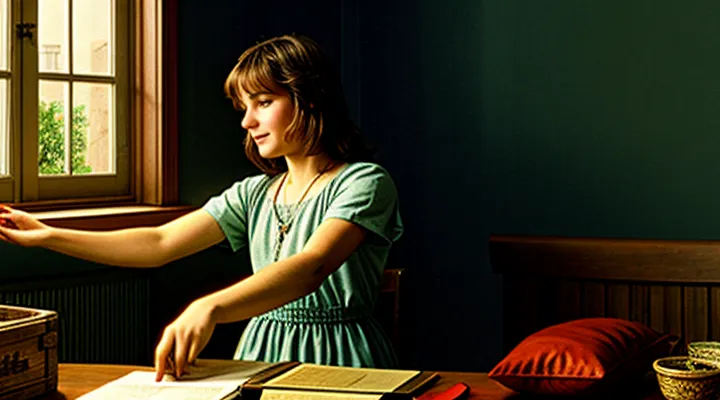Understanding the «Left-Handed Flea» Concept
Initial Encounter and Context
The narrative opens with a laboratory scene in which a senior entomologist examines a collection of insects under a magnifying lens. Among the specimens, a tiny flea draws particular attention because it exhibits an unusual asymmetry: its foreleg joints are oriented opposite to the typical configuration. The investigator discovers the creature while sorting through a batch of field‑caught parasites collected from a barnyard shed, where the ambient dust and low light create a muted backdrop. The flea’s distinctive left‑handed posture becomes evident when the scientist rotates the slide, revealing that the organism’s hind‑body mirrors the conventional right‑handed form, while the anterior limbs remain reversed.
Key elements of the encounter:
- Setting: a dimly lit research chamber adjacent to a rural storage building.
- Participants: a veteran entomologist and an assistant tasked with cataloguing specimens.
- Trigger: an anomaly noted during routine microscopic inspection of flea samples.
- Observation: reversed foreleg orientation identified through careful repositioning of the specimen.
This initial moment establishes the flea’s peculiarity and frames the subsequent inquiry into its biological significance.
Interpretations and Symbolism
Literary Devices Employed
The left‑handed flea functions as a symbolic focal point, and the author deploys a range of literary techniques to render it memorable.
- Metaphor: the flea is described as “a compass turned upside down,” equating its atypical orientation with a reversal of expected direction.
- Irony: the creature’s rarity contrasts with the ordinary setting, highlighting the absurdity of a mundane world that houses an extraordinary anomaly.
- Personification: the flea is given agency—“it darts leftward against the grain”—which animates an otherwise insignificant insect and invites reader empathy.
- Alliteration: repeated “l” sounds in “left‑handed, leaping, lingering” create a rhythmic emphasis that mirrors the flea’s unconventional movement.
- Hyperbole: claims such as “the smallest rebel in the kingdom” exaggerate the flea’s impact, underscoring its thematic weight.
- Foreshadowing: early mentions of “a tilt in the air” hint at the flea’s later appearance, preparing the reader for its symbolic role.
- Symbolism: the left‑handedness signifies dissent from normative patterns, embodying the story’s broader critique of conformity.
Through these devices, the narrative transforms a trivial creature into a potent emblem of inversion and resistance.
Psychological Dimensions
The left‑handed flea serves as a projection of the narrator’s self‑doubt. Its unusual orientation mirrors an internal conflict between perceived competence and hidden inadequacy. The creature’s rarity amplifies feelings of alienation, prompting the character to identify with an outlier status that justifies social withdrawal.
Psychological functions of the flea include:
- Symbolic representation of suppressed traits; the flea’s left‑handedness suggests an aspect of personality that the conscious mind rejects.
- Catalyst for introspection; the encounter forces the observer to confront discomfort with asymmetry, revealing underlying anxiety about nonconformity.
- Mechanism for displacement; attributing irrational behavior to the flea allows the narrator to externalize guilt and avoid direct self‑criticism.
The flea’s presence triggers a cognitive reframing process. By assigning meaning to an improbable detail, the mind constructs a narrative that rationalizes inner turmoil. This self‑generated story stabilizes emotional equilibrium, albeit through a distorted lens that reinforces a sense of otherness.
Unpacking the Narrative Significance
Impact on Character Development
The left‑handed flea functions as a symbolic catalyst that forces protagonists to confront hidden biases. Its unexpected presence interrupts routine behavior, prompting characters to reassess self‑perception and external expectations. By confronting the absurdity embodied in the flea, characters experience a shift from complacency to active self‑examination.
Impact on character development includes:
- Revelation of internal conflict: The flea’s atypical trait mirrors unresolved contradictions within the individual, making latent tensions explicit.
- Motivation for change: Encountering the flea triggers a decision point, compelling characters to adopt new strategies or attitudes.
- Redefinition of identity: The absurd element destabilizes previous self‑definitions, leading to a reconstructed sense of self that integrates the previously ignored anomaly.
Overall, the flea’s role accelerates narrative progression by exposing character flaws, stimulating growth, and reshaping personal narratives without reliance on overt exposition.
Influence on Plot Progression
The left‑handed flea serves as the catalyst that initiates the story’s central conflict. Its unexpected appearance triggers the protagonist’s investigation, shifting the narrative from a passive setting to an active quest. By introducing an element that defies normal expectations, the flea forces characters to confront hidden motives and concealed alliances.
- The flea’s discovery prompts the first clue, directing attention to a concealed laboratory.
- Its unique trait leads to the revelation of a secret society that manipulates events behind the scenes.
- The subsequent pursuit of the flea’s origin drives the plot toward the climax, where the true antagonist is exposed.
Resolution hinges on the flea’s final disappearance, which validates the protagonist’s deductions and closes the narrative loop. The sequence of reactions to the flea’s presence structures the entire storyline, ensuring each major turning point stems directly from its influence.
Broader Thematic Implications
The left‑handed flea appears as a deliberately paradoxical figure that destabilizes conventional expectations about order and normalcy. Its unusual orientation forces readers to confront the limits of categorisation and to recognise that even the smallest elements can embody dissent.
By embodying an inversion of the ordinary, the creature underscores the story’s critique of rigid hierarchies. The narrative uses this inversion to question the legitimacy of authority that relies on uniformity, suggesting that deviation is not merely aberrant but potentially revelatory.
The motif expands the work’s exploration of identity. It signals that self‑definition can arise from traits traditionally deemed defective, thereby reframing marginality as a source of agency rather than a deficit. The flea’s left‑handedness becomes a micro‑symbol of broader social dynamics in which minority perspectives challenge dominant discourses.
Broader thematic implications include:
- A challenge to binary thinking, urging recognition of spectrum rather than dichotomy.
- An illustration of how minor anomalies can expose systemic rigidity.
- A reinforcement of the principle that power structures are vulnerable to subversive, seemingly insignificant forces.
- An invitation to reevaluate moral judgments that hinge on conformity.
